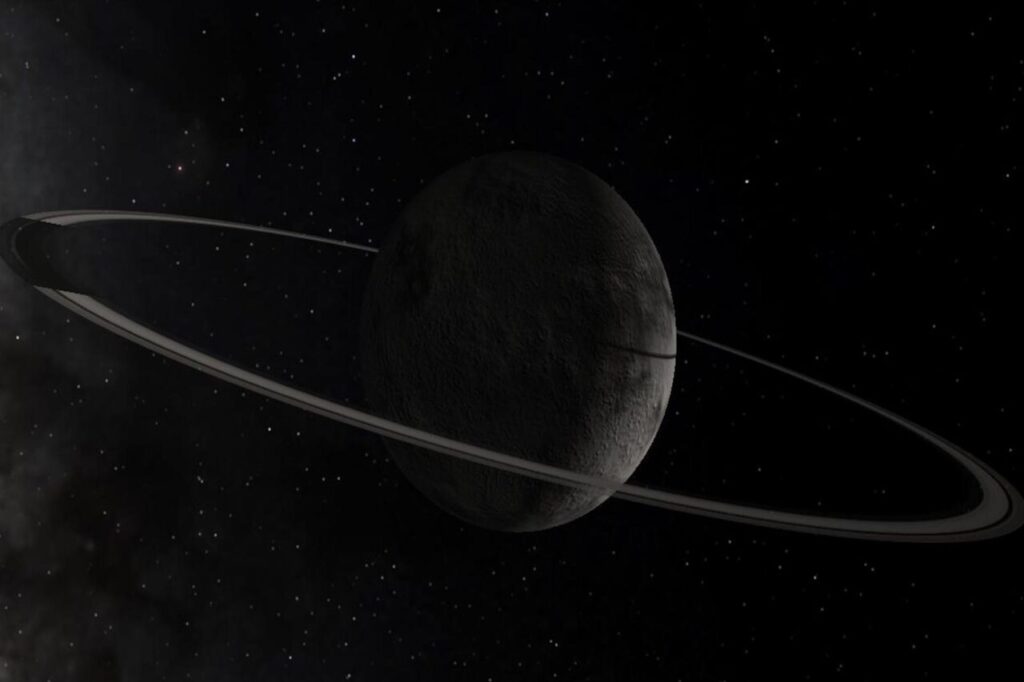
A team of astronomers from Brazil has observed what may be the formation of a ring system around Chiron, a small icy body located in the outer reaches of our solar system. This significant discovery, detailed in a recent publication in The Astrophysical Journal Letters, allows scientists to witness the dynamic process of celestial ring formation as it happens.
Observations conducted at the Pico dos Dias Observatory in September 2023 revealed initial signs of three distinct rings forming around Chiron. The team, led by Chrystian Luciano Pereira, a postdoctoral researcher at the National Observatory (ON/MCTI), analyzed data from Chiron’s transit across a distant star. They noted repeated dips in the star’s light, a pattern suggesting the presence of rings or possibly a cometary tail surrounding the object.
Chiron, discovered in 1977, was the first body identified between the orbits of Saturn and Uranus that did not fit into the traditional categories of planets or moons. This led to the establishment of a new category of celestial objects known as centaurs. For years, astronomers have speculated whether Chiron might possess a ring system similar to those found around gas giants like Saturn, Jupiter, Neptune, and Uranus.
The recent findings show that Chiron is encircled by three well-defined rings located approximately 170 miles (273 kilometers), 202 miles (325 kilometers), and 272 miles (438 kilometers) from its center. Additionally, a fourth ring has been detected at a more distant range of about 870 miles (1,400 kilometers) from Chiron. The discovery of the fourth ring is preliminary and requires further observation to confirm its status.
The significance of these observations lies in their potential to enhance our understanding of how ring systems develop over time. The changes noted in the ring structure indicate that Chiron’s system may be evolving in real time. The fourth ring, located beyond the Roche limit, presents an intriguing case; material beyond this limit typically coalesces to form moons, while material within it is more likely to become part of a ring system.
As the research team continues to monitor Chiron’s transits, they hope to gather more data that will clarify the nature of the materials surrounding the centaur. If Chiron is indeed in the process of forming a ring system, it will provide a unique opportunity for scientists to study the mechanisms behind the formation of rings around celestial bodies, including the majestic rings of Saturn.
The implications of this research extend beyond Chiron itself, as it could inform our understanding of ring systems and their origins throughout the solar system. As astronomers focus their efforts on capturing additional observations, the small icy world may soon reveal more secrets about its formation and evolution, enriching our knowledge of the cosmos.






